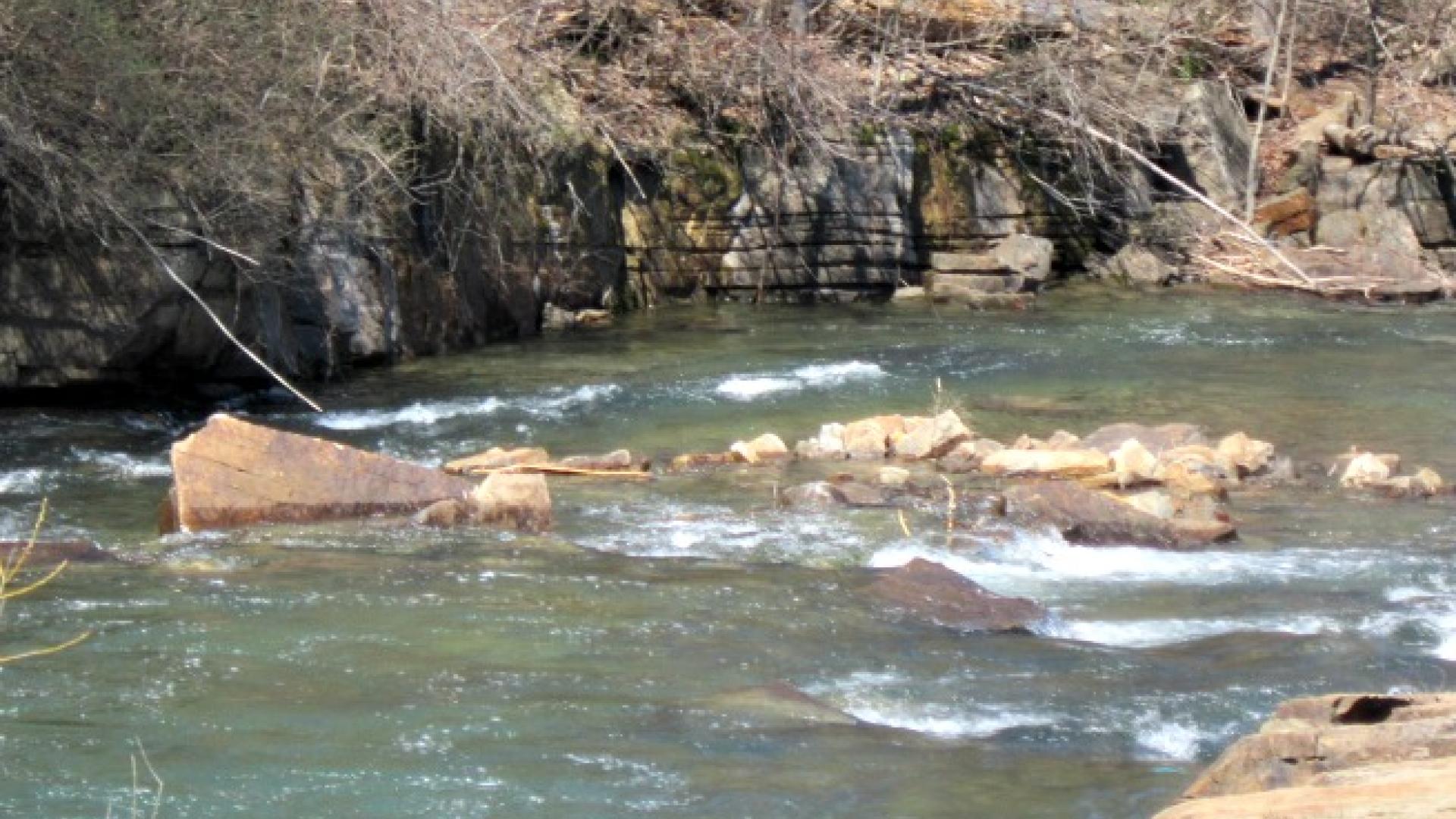Back in the day, someone setting up for industry looked for rowdy rivers and wonderful waterfalls. Water power was a valued resource in early America. Water turned the millwheels to grind grain into flour and powered the sawmills that turned forest into wood; all for building a new nation.
We can see much of this history when we walk the LaChute River Walk Trail. This is a scenic loop around Bicentennial Park with lots of river views. It's easy walking or biking, of three to four miles round trip (depending on any side routes.) There's benches to sit on and interpretive signboards throughout, making this an attraction suitable for all ages and skill levels.
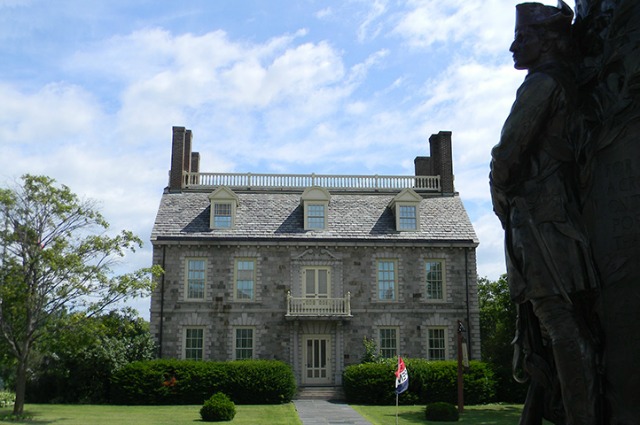
Before or after our River Walk experience, consider a visit to nearby Hancock House. It is connected with John Hancock... in a "seven degrees of Kevin Bacon" kind of way. Thomas Hancock was his uncle, who built a Georgian mansion in 1737 in the famous Boston neighborhood of Beacon Hill. Hancock House is a copy of that structure, built in 1926, for the purpose of perpetuating “American Traditions in History and the Fine Arts.”
It is now a museum run by the Ticonderoga Historical Society. It makes an easy and interesting addition to our walk.
from colonial times
Ticonderoga is right on the shores of the La Chute River which connects Lake George and Lake Champlain. These "water highways" were another important reason for towns and industry to settle along bodies of water. This stretch was called the Northern Gateway.
It was also strategically powerful. Control of the water routes to Canada meant control of the entire northeast. Which is why a series of French forts were built in the area: Fort Anne in 1709, Fort Chimney Point in 1731, Fort Saint Frédéric in 1734, and Fort Carillon (now Ticonderoga) in 1755.
The interpretive signboards throughout the trail indicate the power of this river to shape history over the centuries.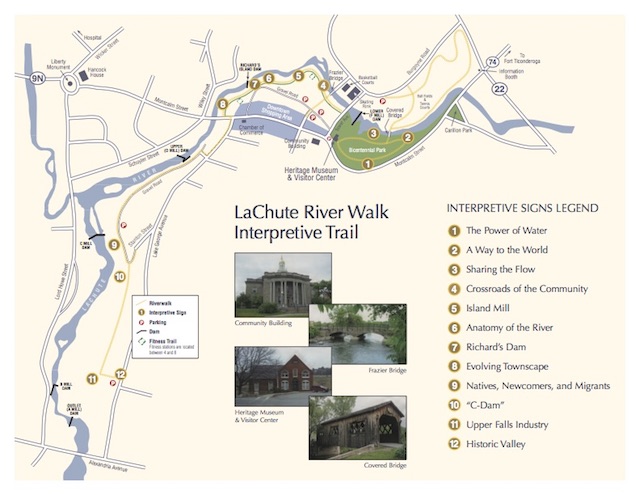
Ticonderoga Pulp and Paper Company once had their lumber yard where the Bicentennial Park is now. But this was an giant one, with a paper mill and wood yard, part of a paper manufacturing empire spread over many states. The company once supplied 60% of the newsprint in the United States. Even before the paper mills, the river was the source of power for grist mills, such as the one built in the 1700's, which is now the Agway building.
If you see a big stone donut, that was from a grist mill. These were the grinders which turned grains into flour, and water power was the preferred engine.
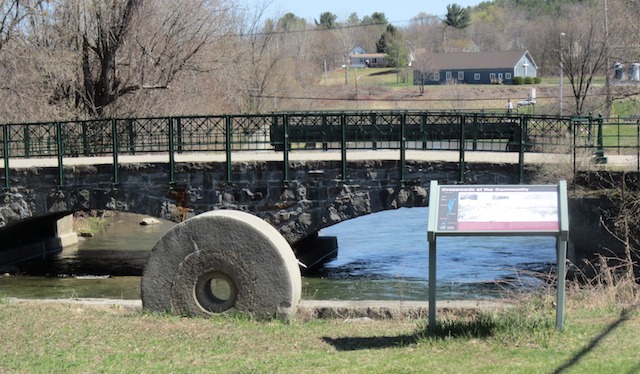
Do stop to enjoy the Frazier Bridge. Yes, one of the oldest bridges in the world!
It is a classic double arched bridge from 1894; twenty three feet wide, spanning fifty feet. The name comes from the family of B.F. Frazier, who had a planing mill and cabinet-making shop nearby. An iron bridge in the spot collapsed in 1892, and it was decided the new one would be an arched stone structure, which would bear up better under the local weather conditions.
It seems small now, but it handled continual mill traffic until 1959, when machines got so big it became a footpath. Still treasured, and one of the few remaining structures from the industry that sprang from the lower falls.
into the 20th century
The year 1913 was a "watershed year" for United States paper companies. A new tariff situation allowed Canadian newsprint to flood the market, and companies scrambled to re-invent themselves. There was a tradition of doing so. Before paper, there was cloth.
As seen below, Richard's Dam was once a former pulp mill flume gate. It controlled the flow of water depending on need. Before the pump mill, it powered an entire complex of spinning and weaving machines.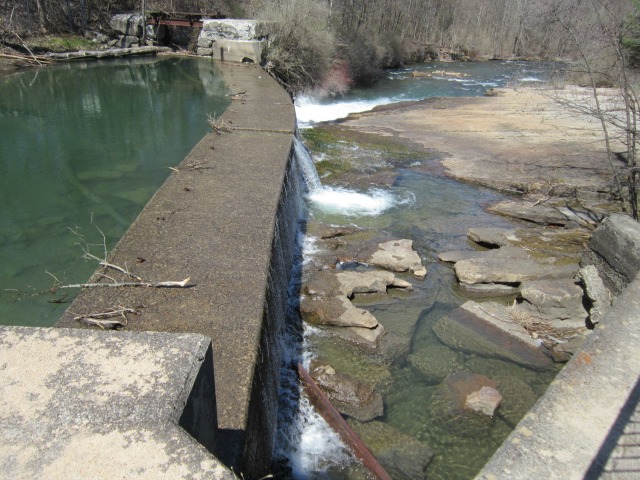
Richard's Dam once powered the Treadway Woolen Mill, back when Merino sheep covered the nearby countryside. In these modern times of man-made fabrics, it can be difficult to realize the importance of wool to Western civilization. At one time, it was the warmest cloth anyone could possibly wear, and so it was always valuable.
In addition, the soil of the Champlain coast was nutritious for plants; but often thin. Breaking down granite is a slow, though mineral-rich, process. Shallow rooted plants like native grasses had an evolutionary advantage over more traditional crops, especially those grown with 18th Century methods. So the best crop to raise was a renewable resource like sheep.
Especially in a place that had the power to drive a giant fleece-to-cloth complex.
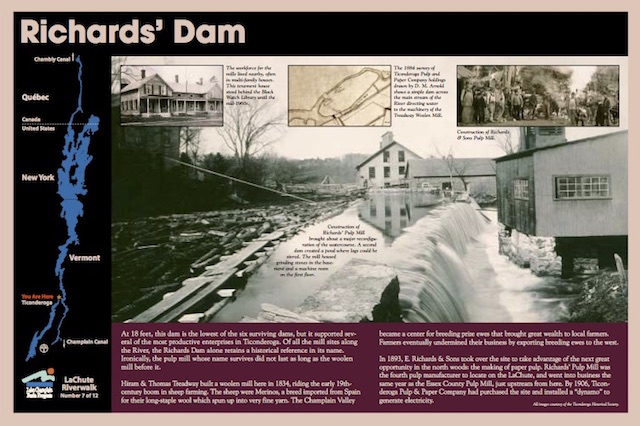
The mill began in 1891, on the island which occupied the center of the village. So, of course, it was called The Island Mill.
Fully supplied with a steam whistle and clock tower, it dominated the skyline, the lives of the workers, and the growth of the town. As buildings clustered around it, the island itself became obscured. The slight hill into the building was once the old riverbed of Spencer Creek, but soon, no one still alive remembered that.
That is what is so spectacular about the glimpse of historic industrial power we can view on the Riverwalk; this was the engine of the past. Mother Nature.
The finish to the trail is a climb up to where the river leaves Lake George. Here it takes a two-mile plunge to the foot of Bicentennial Falls.
spring awakening
Today, spring is the perfect time to catch a glimpse of this amazing past. The snowmelt from the mountains still races along to Lake Champlain, dropping 200 feet (that's a twenty story building) from the town to the shore. Feel the roaring power of our waterfalls at this most lively time.
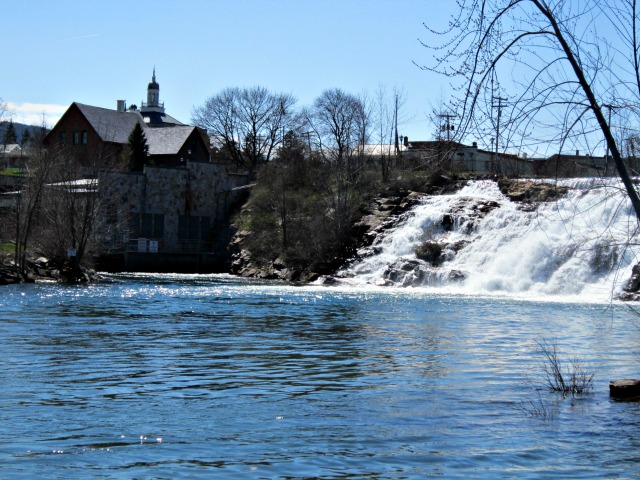
It is also when our waters are their bluest and most sparkling. Spring sunshine is not filtered through summer-thick leaves, putting more light on our rivers and lakes. The water is colder, so blue is reflected with its greatest strength. The warmer the water, the more easily natural precipitates dissolve into it; blunting the color as the water warms.
Experience our early season beauty with the one hundred and thirty five acres of recreational parks in Ticonderoga. From an easy stroll with small chidren or grandparents to more intense activities on ball fields and courts for basketball and tennis, we can have lots of fun with our family. Which includes doggies, of course; there is also a dog park.
Playgrounds, handicapped fishing access, and picnic areas welcome all comers. Don't forget to explore our area on those time-honored "water highways." There's a launch near the falls for canoes and kayaks.
Summer is a time for lazy days, and by that time we welcome it. Because spring is when the world wakes up from the sweet sleep of winter, ready to burst into buds and blooms. The Lake Champlain Coast is a photographic and recreational paradise, but if you have never been there in spring...
Maybe it's time.
Choose a historic place to stay. Dine in farm-fresh restaurants. Learn more about our history.

